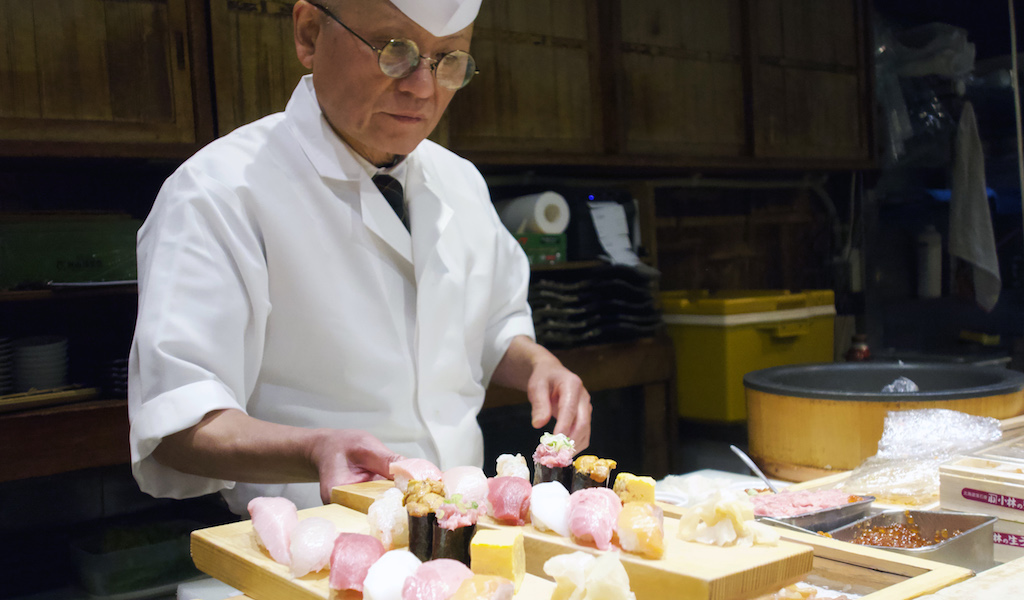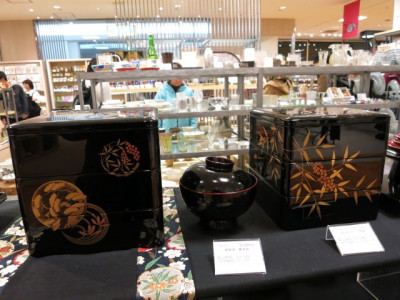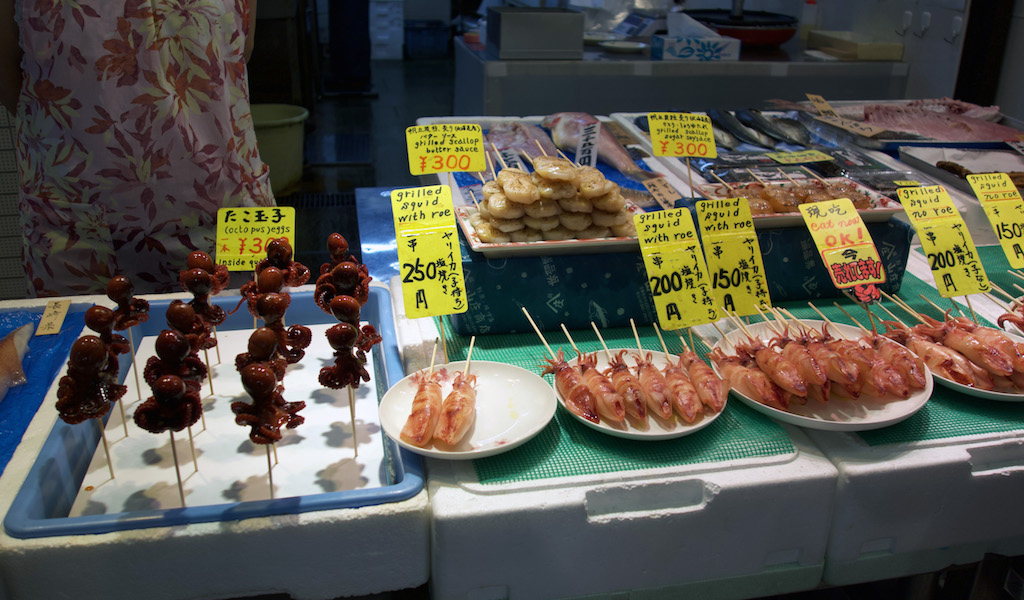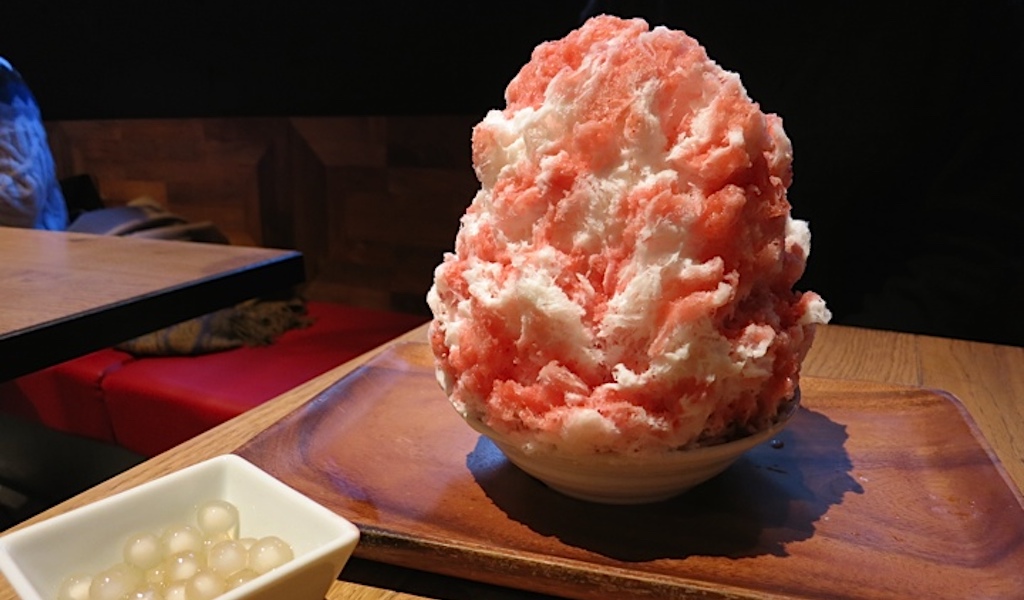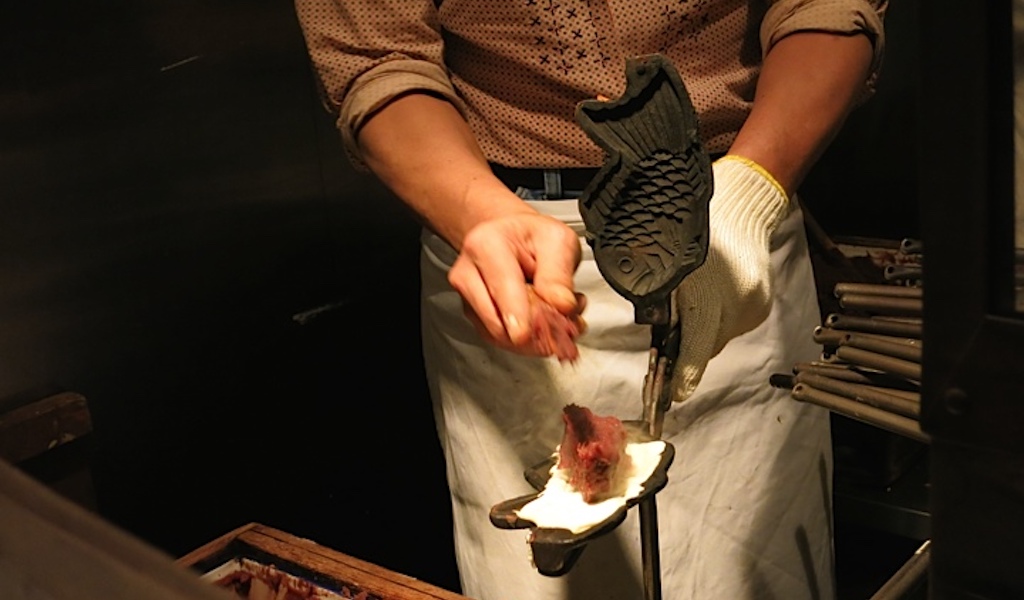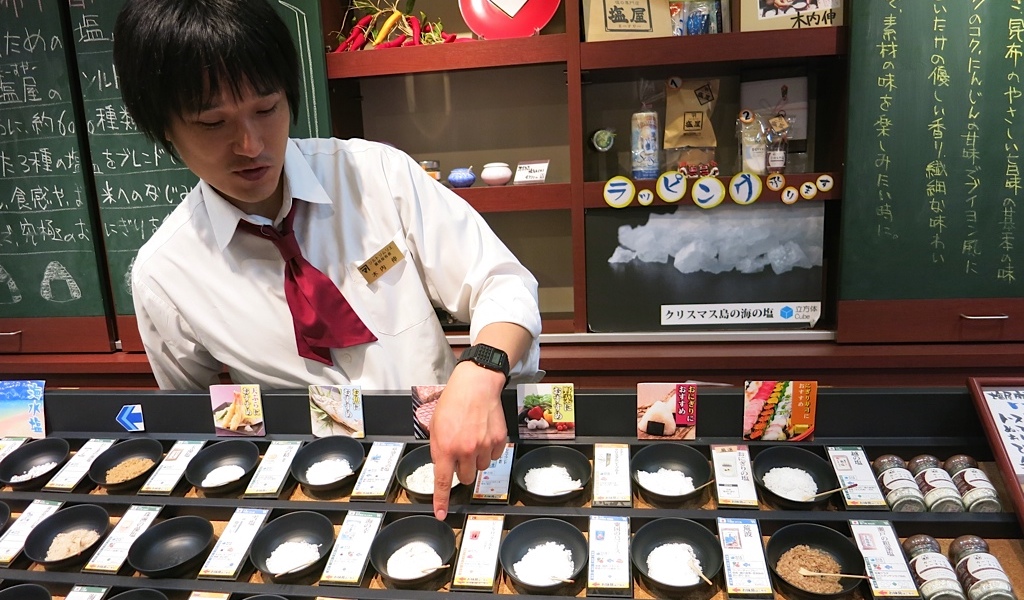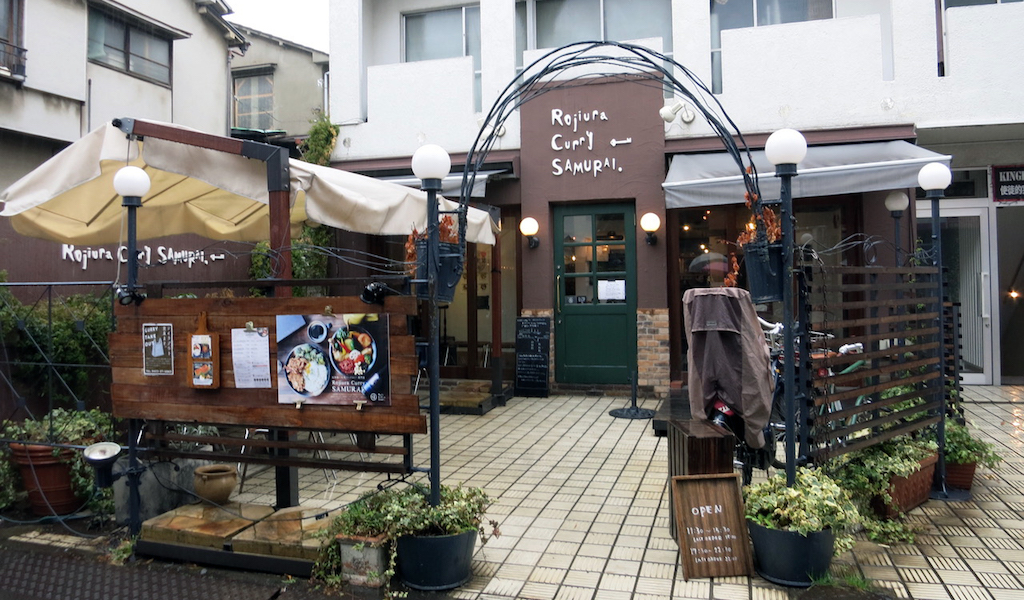We can't find the internet
Attempting to reconnect
Something went wrong!
Hang in there while we get back on track
Search results for "Fran Kuzui"
Tokyo
Market Watch: Signs of Life in Tsukiji’s Outer Space
Mark Twain once famously remarked, “The reports of my death are greatly exaggerated.” Perhaps Tokyo’s beloved and historic Tsukiji Market can say the same. Several years ago the Metropolitan government declared that Tokyo’s Tusikiji fish market needed to be relocated to a more efficient and workable location. Construction was begun on a new state-of-the-art site 2.3 kilometers away in the Toyosu area of Tokyo, strategically located facing Tokyo Bay.
Read moreTokyo
Osechi Ryori: Edible New Year
‘Tis the season of the Japanese New Year’s trinity: osechi, oseibo and nengajo. Like newsy Christmas cards, the nengajo is a recap of family or personal news mailed in postcards during the weeks preceding the end of the year and efficiently delivered all over Japan promptly on January 1. The winter gift-giving season is in full swing, with companies and individuals sending oseibo gifts as thank-you expressions for kindnesses over the year. Most gifts are food or household items like cooking oil or soap. The best of the traditions is osechi ryori, traditional New Year’s cuisine. Osechi is not something one can find in a restaurant because it’s eaten only one time a year, at home or when visiting others at home.
Read moreTokyo
CB on the Road: Going Hyper-Local at Kyoto’s Nishiki Market
While most artisanal markets and mom-and-pop groceries throughout Japan have given way to large supermarket chains and convenience stores, Kyoto still boasts one of the last markets selling local delicacies along with fresh foods and housewares. Often called “Kyoto’s Kitchen,” Nishiki Market is not like traditional huge bazaars with stalls selling fresh vegetables, fruits and meat. The market’s roots date back almost five centuries, to the fish market that grew up around an underground stream that remains freezing cold throughout the year and historically provided a way to keep fish fresh in a city far from the sea.
Read moreTokyo
Yelo: Ice Dreams
Editor’s note: It’s Beat the Heat Week at Culinary Backstreets, and in this week’s stories, we’re sharing some of our favorite spots to visit when the summer temperatures soar. Yelo, Roppongi’s kakigori (shaved ice) mecca, summoned the faithful with free samples on April 1 like some kind of cool April Fool’s joke for the not-quite-warm weather. The line stretching to the Hard Rock Café a block away was a reminder of things to come. Now the weather has turned much warmer, and the wait is daunting. The line snakes out the somewhat hidden doorway along the outside of the restaurant, winding down a street housing an artisanal-beer darts bar and a club featuring a Beatles cover band.
Read moreTokyo
Naniwa Café: Fortune Fish
It’s always tempting to try and take on all three major museums in Tokyo’s Art Triangle in one day. It would be easy to be overwhelmed by the delicious treasures of the National Art Center Tokyo, the Suntory Museum of Art and the Mori Art Museum, so we usually opt for just one and head to Naniwa afterwards for a pot of tea and their delicious taiyaki, a popular form of Japanese sweets (wagashi). The classic version of taiyaki is a fish-shaped pastry with a waffle-like exterior and a filling of red bean (adzuki) paste, though there are plenty of variations encasing chocolate, cream, custard or some other luscious filling. The finished delicacy is best eaten freshly baked, although many people enjoy it at home reheated. Taiyaki resembles a red snapper (tai or madai), which is considered an auspicious fish in Asia.
Read moreTokyo
Ma-Suya: Salt Mine
Japanese cuisine is often the art of quiet subtlety, and to that end, salt is one of its greatest supporters. The freshest of fish can be highlighted with a splash of the correct salt; cold sake drunk from fragrant cedar vessels is well enhanced with salt on the rim; and even tempura is frequently not dunked in sauce but instead sprinkled with salt by serious connoisseurs of fried delicacies. Salt plays a very significant role in Japanese culture and religion. It is a sign of purification. Thus most sushi restaurants mound salt on both sides of the entrance to show the place is clean and pure. Sumo wrestlers will throw salt into the ring before a match. Japanese people frequently throw salt over the entrance to their homes to purify their households. We’ve even seen people with packets of salt in their car.
Read moreTokyo
Have It Your Way: Customized Curry in Tokyo
The song “My Way” may be a staple of every karaoke bar in Japan but it’s also a fitting description for the Japanese fast food staple of “curry rice” as served at both Rojiura Samurai Curry and CoCo Ichibanya. One can find four Tokyo outposts of Rojiura Samurai Curry, a Hokkaido curry maker from Sapporo, in Hachioji, Shimokitazawa, Kakurazaka and our favorite, Kichijoji. It seems these Japanese curry masters are fond of opening shops in cool neighborhoods where the locals will appreciate the uniqueness of this favored Japanese dish. Much like ramen noodles, curry rice is adapted from a foreign cuisine as a form of fast food in Japan.
Read more